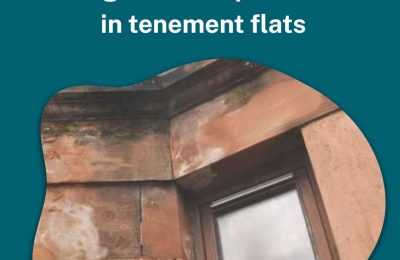Many of the measures outlined in Màiri McAllan MSP, the Cabinet Secretary’s Housing, Emergency Action Plan in September, are to be welcomed, but failure to look at the impact of property taxes also means a failure to look at affordability in the housing market and the cost of renting.
The Scottish Government’s Housing Emergency Action Plan concentrates on three central areas: stopping children residing in unsuitable accommodation, helping the housing needs of disadvantaged groups, and supporting growth and investment in the housing sector. The Housing Secretary committed to some key policy measures to combat Scotland’s housing emergency. These include a fresh commitment to invest up to £4.9 billion over the next four years that will deliver 36,000 affordable homes by 2029-30 and providing a home for up to 24,000 children; doubling investment in acquisitions this year to £80 million to take between 600-800 children out of temporary accommodation; and by ensuring landlords quickly tackle issues hazardous to tenants by implementing Awaab’s Law. This law is designed to tackle damp and mould by March 2026.
The missing piece: property tax reform must be part of the solution
However, what’s missing is a focus on property tax and costs that landlords face, which ultimately impact the affordability and availability of rented property. The UK Government’s decision to reduce mortgage interest relief and the Scottish Government’s increases to Additional Dwelling Supplement, now at eight per cent compared to a three per cent rate when it was introduced in 2016, primarily affects landlords, but through higher operating costs, it can indirectly lead to increased rental prices, as a result impacting renters’ affordability by increasing the proportion of income spent on rent. Importantly, the Housing Investment Taskforce report of March 2025 recommended that “Taxation, and its ability to influence housing investment activity, merits a more detailed review not within the scope of the Taskforce. This review should include how taxation is affecting mobility through the housing system and how it can incentivise improvements in quality and support net zero ambitions.”
In June, Propertymark responded to the Scottish Government’s consultation on how powers in the Housing (Scotland) Bill could be used to exempt properties from rent control areas, arguing that any exemptions regime must be balanced and incentivise upgrades to private rented properties. This is important because 74.9% of Scotland’s 238,094 registered private landlords owned just one rental property as of April 2024, and at a time when social rented sector housing completions are down by 26 per cent.
The Cabinet Secretary has confirmed that build-to-rent and mid-market homes will be exempt from rent controls and committed to exploring the possibility of regulations that would allow for increases where the rent has been held consistently below market rent or where there has been investment in improvements to the quality of the rented property. This is positive news. It is vital that landlords are not disincentivised from maintaining their properties and expanding their portfolios in order to bring down the cost of renting and tackle the housing emergency.











